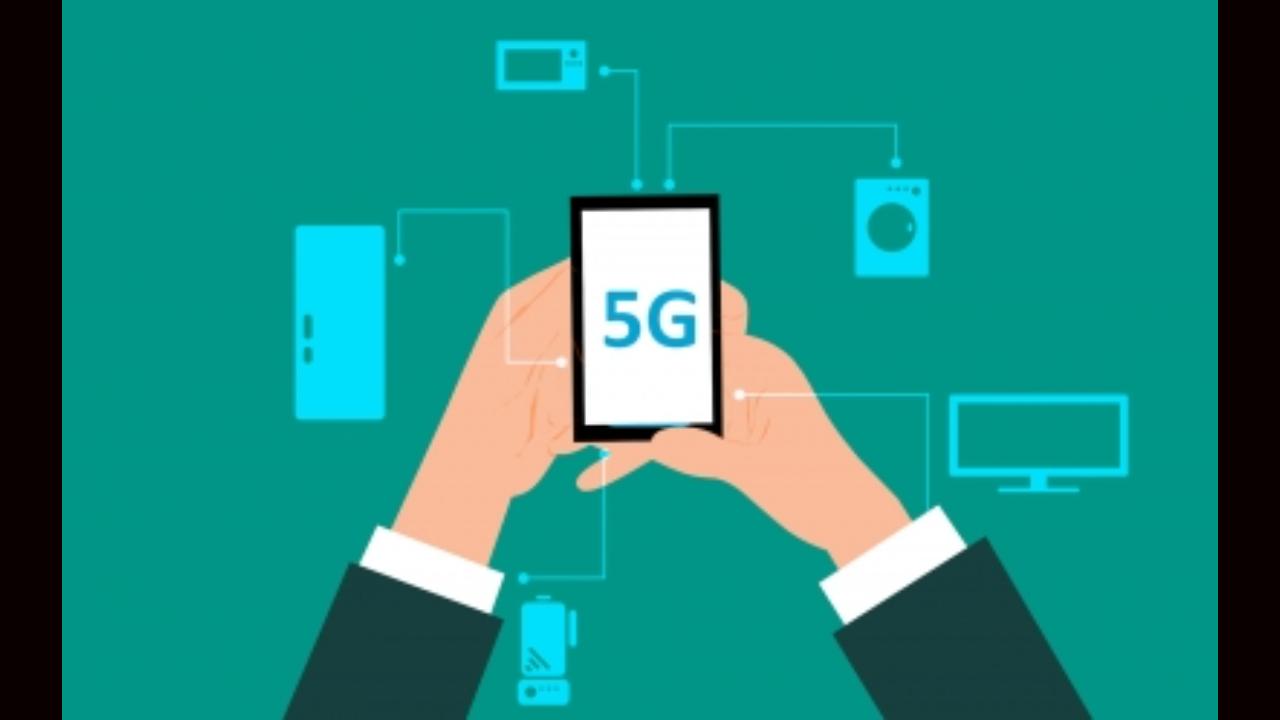The Dutch Authority for Nuclear Safety and Radiation Protection (ANVS) last week issued 'anti-5G' product alerts for a pendant, a sleep mask, two necklaces and five different bracelets, including one for children, saying wearing these products continuously for a long time could cause tissue and DNA damage

Image for representation: IANS
With increasing adoption of 5G globally for a much faster internet experience, some studies have flagged health risks associated with the use of 5G on the human tissues -- amid conspiracy theories that 5G mobile networks are to be blamed for the Covid-19 pandemic.
ADVERTISEMENT
The fear psychosis among a section of people is such that 'anti-5G' necklaces, sleep masks and children's bracelets are being sold online on leading e-commerce platforms, with the claim that they protect against the harmful effects of 5G cell networks.
However, these 'anti-5G' wearables have now themselves been classified as dangerous!
The Dutch Authority for Nuclear Safety and Radiation Protection (ANVS) last week issued product alerts for a pendant, a sleep mask, two necklaces and five different bracelets, including one for children, saying wearing these products continuously for a long time could cause tissue and DNA damage.
According to industry experts, there is still no concrete evidence yet that 5G networks have negative health effects on humans, as 5G technology is currently at an early stage of deployment and the extent of any change in exposure to radio-frequency fields is still under investigation.
The World Health Organization (WHO) says that currently, exposure to 5G infrastructure at around 3.5 GHz is similar to that from existing mobile phone base stations.
"With the use of multiple beams from 5G antennas, exposure could be more variable as a function of location of the users and their usage," the WHO said.
In India, where broadband technology is still in various trial stages as 5G spectrum roll-out gets delayed, experts are of the view that the country is currently following international norms on broadband technologies.
"India has far stricter norms than what 198 countries have globally which are following the norms laid out by the International Commission on Non-Ionising Radiation Protection (ICNIRP)," Pankaj Mohindroo, Chairman, India Cellular and Electronics Association (ICEA), told IANS.
ICNIRP is a non-profit organisation that provides scientific advice and guidance on the health and environmental effects of non-ionising radiation (NIR) to protect people and the environment from detrimental NIR exposure.
"For example, our radiation value or specific absorption rate (SAR) value is maximum 1.6 watts on 1 gram of tissue, compared to 2 watts on 10 grams of tissue across the world (except the US and South Korea)," Mohindroo informed.
"5G non-ionising radiation is not different from 4G or 3G as these norms are capped," he added.
The Department of Telecom (DoT) clearly specifies that all the new designs of mobile handsets shall comply with the SAR values of 1.6 watts/kg, averaged over 1 gram of human tissue.
Tissue heating is the main mechanism of interaction between radio-frequency fields and the human body. Radio-frequency exposure levels from current technologies result in negligible temperature rise in the human body.
"As the frequency increases, there is less penetration into the body tissues and absorption of the energy becomes more confined to the surface of the body (skin and eye). Provided that the overall exposure remains below international guidelines, no consequences for public health are anticipated," according to the WHO.
To date, and after much research performed, no adverse health effect has been causally linked with exposure to wireless technologies.
Health-related conclusions are drawn from studies performed across the entire radio spectrum but, so far, only a few studies have been carried out at the frequencies to be used by 5G.
According to Prabhu Ram, Head-Industry Intelligence Group (IIG), CMR, humans are exposed to varying types of radiation on a daily basis, including from sunlight.
"5G generates non-ionising radiation at very safe levels, and well within the established safety parameters. Unlike earlier generations of mobile communications, 5G operates by using and emitting less power," Ram told IANS.
A recent paper by the European Parliamentary Research Service (EPRS) on health impact of 5G cited the International Agency for Research on Cancer (IARC) which classified radio-frequency (RF) electromagnetic fields (EMFs) as 'possibly carcinogenic to humans' and recommended RF exposure for re-evaluation 'with high priority'.
The 5G pioneer bands identified at EU level have frequencies of 700 MHz, 3.6 GHz (3.4 to 3.8 GHz) and 26 GHz (24.25 to 27.5 GHz).
"The first two frequencies are similar to those used for 2G to 4G technologies and have been investigated in both epidemiological and experimental studies for different end points (including carcinogenicity and reproductive/developmental effects), while 26 GHz and higher frequencies have not been adequately studied for the same end points," the EU paper read.
Unfortunately, there is a lack of information on the potential harms of RF-EMF.
"The information gap creates scope for deniers as well as alarmists, giving rise to social and political tension in many EU countries. Campaigns to inform the citizens should be therefore a priority," said the paper.
What is definitely required is an early and proactive availability of comprehensive information around 5G and how it works.
"These information resources should be easy-to-grasp and understand, for all consumer demographics," Ram noted.
This story has been sourced from a third party syndicated feed, agencies. Mid-day accepts no responsibility or liability for its dependability, trustworthiness, reliability and data of the text. Mid-day management/mid-day.com reserves the sole right to alter, delete or remove (without notice) the content in its absolute discretion for any reason whatsoever.
 Subscribe today by clicking the link and stay updated with the latest news!" Click here!
Subscribe today by clicking the link and stay updated with the latest news!" Click here!







